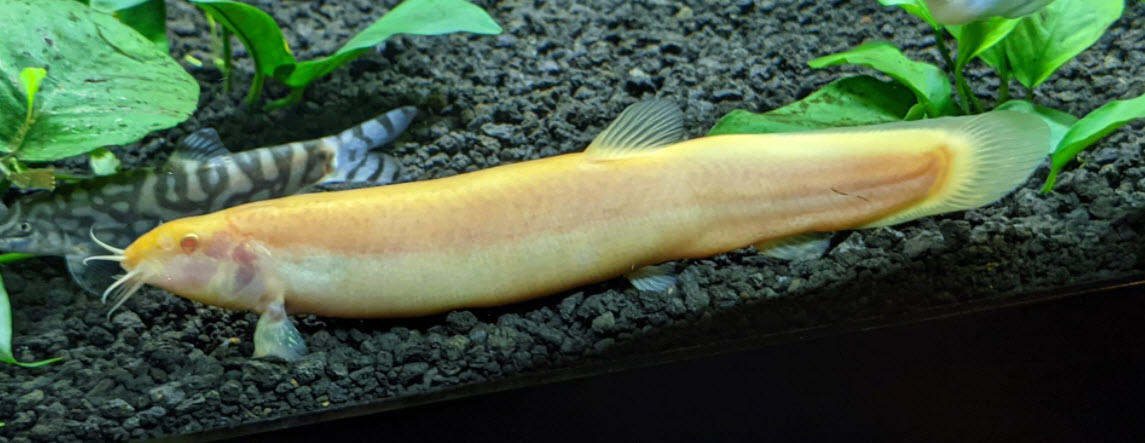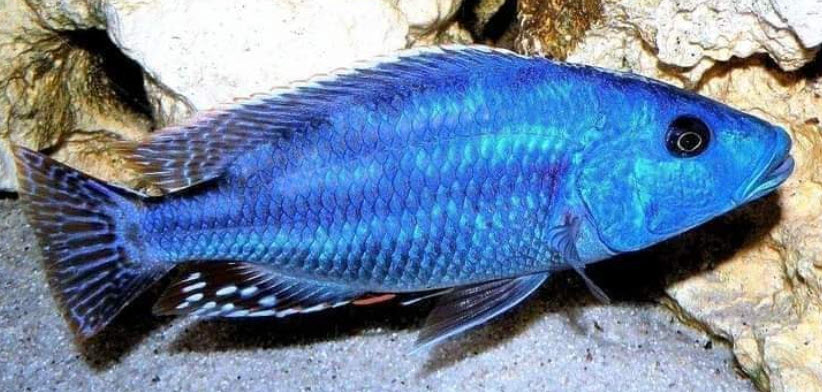Most high-tech planted aquariums use a high-tech CO₂ injection system. These systems are prone to failures, and I don’t recommend them for aquariums with decent numbers of decent sized fish. And this is one case where cheaper can get you into trouble. It is often more difficult to set up cheaper high tech pressurized systems and I’ve found them to be more prone to failures.

Equipment
To set up a high-tech, high-pressure CO₂ system one will need:
- Pressure tank filled with CO₂
- Pressure regulator valve
- Pressure gauge
- Bubble rate checker
- Electromechanical solenoid, I like to have two solenoids, i.e. redundancy.
- Good timer (you want to turn the CO₂ off when there is no light). I like to have two mechanical timers, i.e. redundancy.
- Check valve in the gas line to the aquarium (positioned at the top of the aquarium)
- Diffuser or reactor
- Silicone Tubing
- CO₂ level bromothymol checker
Note I do not include tanks with citric acid/baking soda or sugar/yeast generating set-ups. These systems typically cannot supply the amounts of CO₂ needed to maintain 25 to 30 ppm of CO₂.

Note if you have fish in the tank, redundancy is important. With fish it is important to have two solenoids operated off two timers. Also note I’ve had several of the new electronic timers “fail” on me. This is probably my fault since the programming of these things is very difficult for me to grasp. If one can get the old mechanical timers, I heartily recommend them.
The whole package will run $100 to $400. A large 100-gallon (378.5 liter) planted aquarium will typically run one to two months on one cylinder of gas. Cory of Aquarium Co-op has an excellent video on how to set up a CO₂ system.

Diffusers
There are a huge number of options when it comes to diffusers which mix the CO₂ into the tank water. I like to keep it simple with the fine bubble diffusers (sometimes called “misters” or “atomizers”), either in line ($40) or in tank ($25). The various diffusers are decent diffusers but can produce lots of distracting fine bubbles which decidedly detract from the aesthetics of the aquarium. Probably the best diffuser is something like a Mr. Aqua CO₂ diffuser which adds a small powerhead to a diffuser.

If one doesn’t like the fine bubble produced by diffusers I highly recommend an inline reactor, such as the Sera CO₂ Flore Active Reactor ($75). In line reactors feed the gas directly into rotating blades which thoroughly mix the CO₂ and the water without creating small bubbles. So the aquarium doesn’t look like it was filled with a bottle of Sprite. Reactors are 50 to 100% more efficient with the CO₂ than bubble diffusers.

CO₂ Injection Schedule
If one has no fish or only has a few small fish (i.e. “light stocking”) in a planted aquarium then simply turn the CO₂ on and off at the same time as the lights go on and off. Easy! More advance aquarists turn the CO₂ on and off one hour before the lights go on and off. For a clearer definition of “light stocking” go to this link:
But if one has even “moderate stocking” then one needs to add some aeration at night.
With “moderate stocking” of fish I would recommend:
- Use the above high pressure CO₂ injection system.
- Alternate the CO₂ injection with two aerator systems (this uses two large air stones with two decent sized air pumps but two wavemakers creating two large areas of choppy waves would also work).
- Aim for 16 to 24 ppm of CO₂.
- Schedule is as follows:
- Lights 8 AM till 10 PM
- CO₂ injector 7 AM till 9 PM
- Aerator and air pump #1 9 PM till 8 AM
- Aerator and air pump #2 9 PM till 8 AM
This schedule reflects the fact that any gas exchange process takes about one hour to become effective (or ineffective). It also reflects the fact that plants convert CO₂ to oxygen when in light so aeration isn’t required when the lights are on. The second aerator and pump reflect the fact that fish are much less resilient than the plants. Go without aeration for one night due to a pump failure and you can end up with a tank of dead fish. Fish are EXPENSIVE! Go without CO₂ for weeks and all will be fine with the plants.
And I simply do not recommend heavy stocking if fish with ANY CO₂ injection system. The likelihood of killing a whole tank of fish is just too great.

Aeration and CO₂
Note that the amount of CO₂ being put into the tank, the amount of aeration and the time to get up to a decent level of CO₂ is a very complex relationship.
A fifty gallon (189 liter) tank with fish might get to various CO₂ levels under several different scenarios:
- rapid injection of lots of CO₂ and large amounts of aeration might only take 30 minutes to get to 30 ppm and it will safely hold the 30 ppm for the rest of the day
- rapid injection of lots of CO₂ and no aeration might only take 40 minutes to get to 40 ppm and kill the fish in the tank
- three bubbles per second of CO₂ and moderate aeration might take two hours to get to 30 ppm and it will safely hold the 30 ppm for the rest of the day.
- One bubble per second and no aeration might take six hours to get to 30 ppm and it will safely hold the 30 ppm for the rest of the day.
- One bubble per second and large amounts of aeration might take ten hours to get to 12 ppm and it will safely hold the 12 ppm for the rest of the day.
Most planted tank enthusiasts do not have significant numbers of decent sized fish in their tanks. The air stone, air pumps and wavemakers can be removed from aquariums with only small schools of small fish in them. In low stocked aquariums one can safely go as high as 30 ppm CO₂.
Importance of CO₂
Carbon dioxide levels are VERY important in high tech aquariums. The aquarium below was where the operator ran out of CO₂ and just let the tank go for a while with no CO₂. The result was stopping of active growth by the plants and the start of a huge algae outbreak.

Note the deep blue color in the drop checker. And the coating of green algae on SOME of the plants. The hobbyist tore the tank down. This was unfortunate as if the CO₂ level had simply been taken above 20 ppm the plants would have resumed growth and killed the algae.
Meer informatie over CO₂ systemen
A general treatment of carbon dioxide in the planted aquarium can be found at this link:
15.6 Carbon Dioxide in a Planted Aquarium
Measurement of the CO₂ level in an aquarium is covered in this link:
Information on setting up a low tech CO₂ system can be found at this link:
Another type of aquarium uses a wood rich soil to provide a modicum of CO₂ to an aquarium:
Yet another type of planted aquarium uses wood pellets to provide extra CO₂:
15.10. Hybride beplante aquaria
Using food to provide CO₂ is covered in this link:
The intricate relationship between Plants, KH, pH and CO₂ is covered in this link:
15.6.2. KH, pH, CO₂ relaties in een beplant aquarium
And some additional data on the complex “Bermuda Triangle” of pH, KH and CO₂ can be found in this link:



